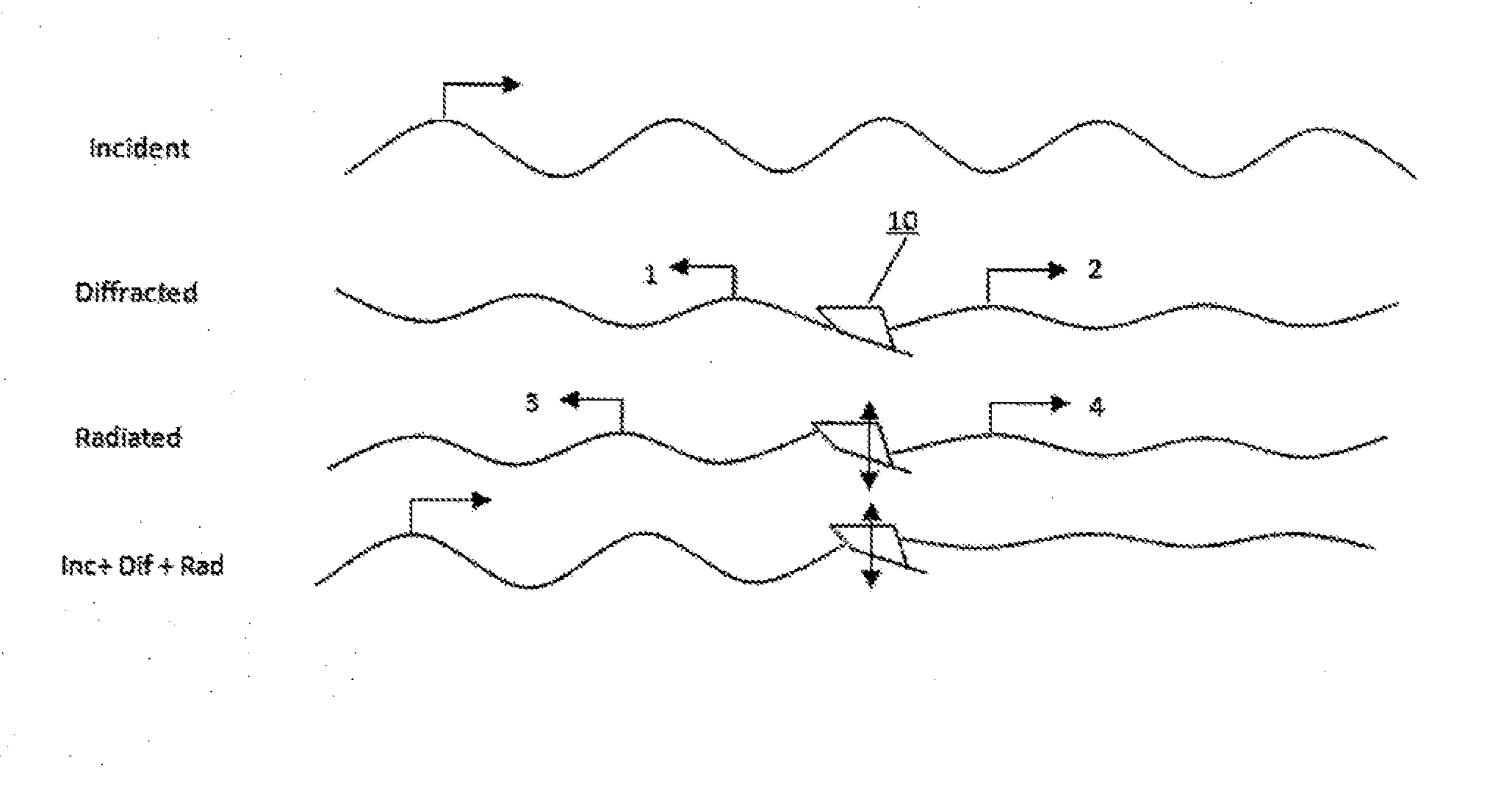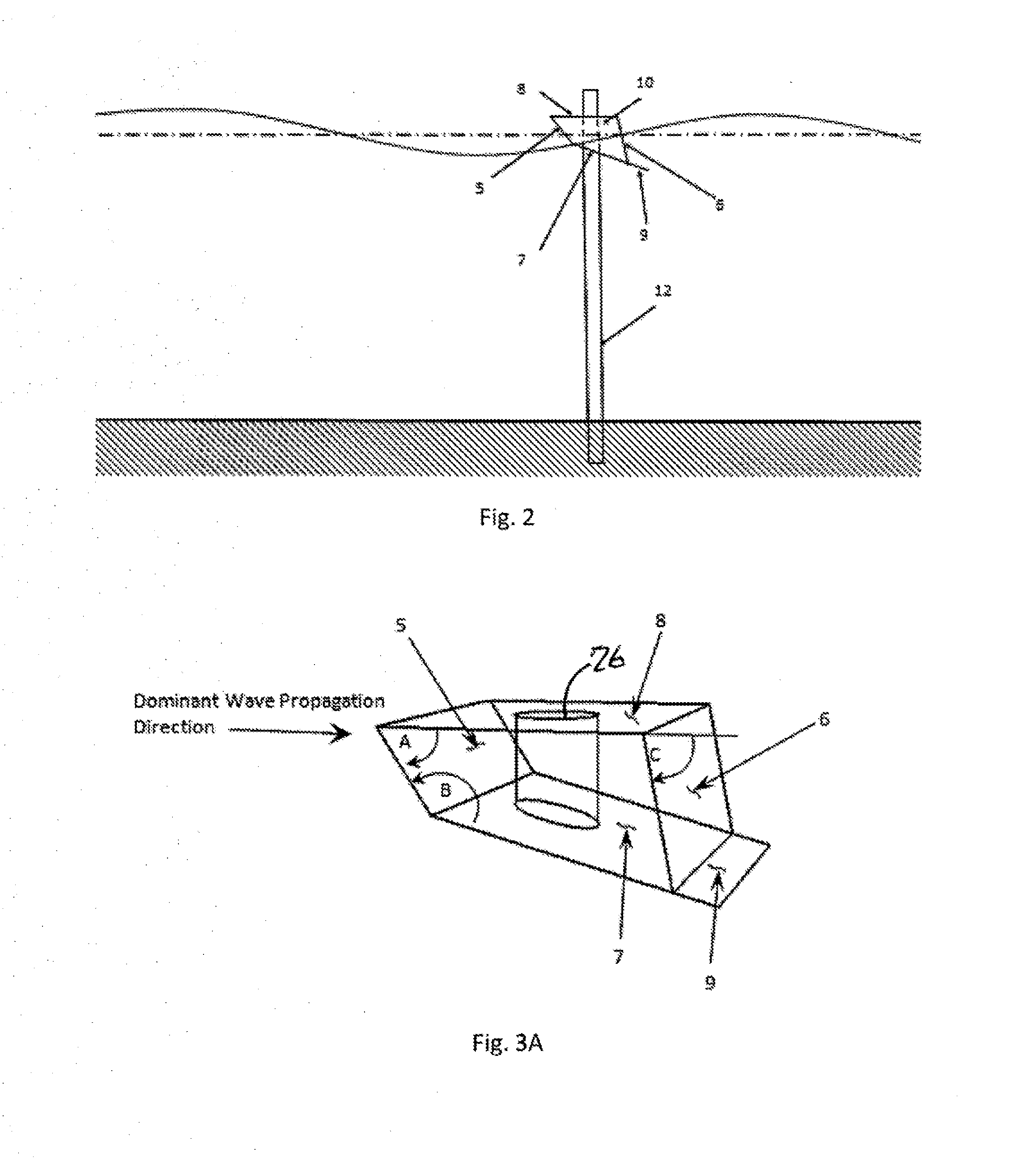Asymmetric floats for wave energy conversion
a wave energy conversion and asymmetric technology, applied in the direction of mechanical equipment, machines/engines, electric generator control, etc., can solve the problems of not being the most efficient structure, known axis-symmetric structures, etc., to improve the power generation efficiency and survivability of wecs, improve the efficiency of wecs, and achieve optimal performance. , the effect of high energy captur
- Summary
- Abstract
- Description
- Claims
- Application Information
AI Technical Summary
Benefits of technology
Problems solved by technology
Method used
Image
Examples
Embodiment Construction
[0027]FIG. 1 is a two-dimensional representation of a floating body 10 embodying the invention which may be used to form a wave energy converter (WEC). FIG. 1 shows the floating body 10 in the presence of an incident wave (travelling from left to right in FIG. 1) and illustrates that a good wave absorber must be a good wave maker. The waves caused by the body 10 are broken down into the two components, diffracted and radiated. The diffracted wave is a result of the incident wave and the presence of the body in the absence of any motion. The radiated wave is the result of the motion of the body in otherwise calm water.
[0028]Consider the floating body 10 to have a prismatic (depth) float shape that is extruded in a direction parallel to the wave crest. In the limiting case of a long prism, this becomes a 2-dimensional or long crested wave problem. As such, the disturbance waves can each be further broken down into two components. One set of disturbances propagates in the same directio...
PUM
 Login to View More
Login to View More Abstract
Description
Claims
Application Information
 Login to View More
Login to View More - R&D
- Intellectual Property
- Life Sciences
- Materials
- Tech Scout
- Unparalleled Data Quality
- Higher Quality Content
- 60% Fewer Hallucinations
Browse by: Latest US Patents, China's latest patents, Technical Efficacy Thesaurus, Application Domain, Technology Topic, Popular Technical Reports.
© 2025 PatSnap. All rights reserved.Legal|Privacy policy|Modern Slavery Act Transparency Statement|Sitemap|About US| Contact US: help@patsnap.com



